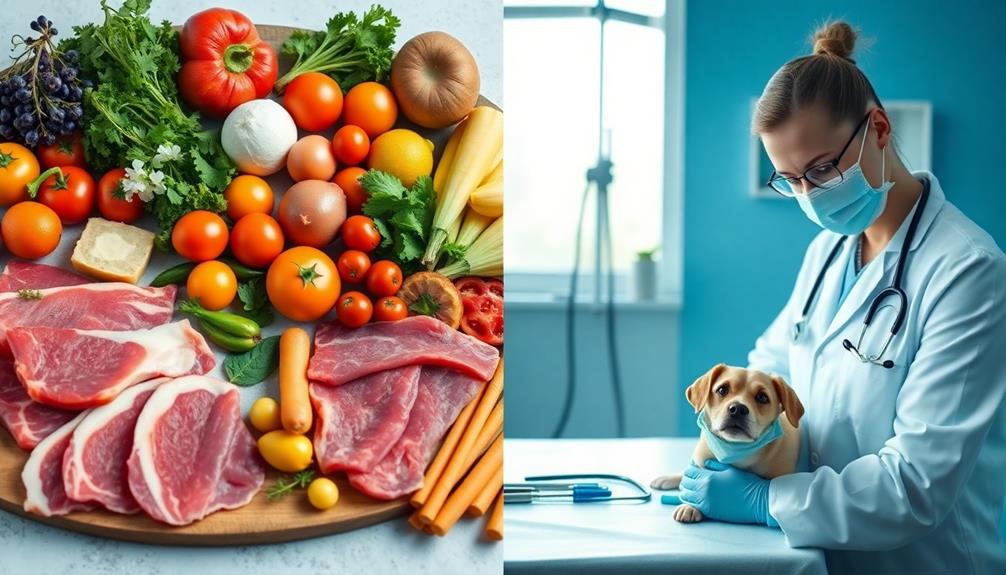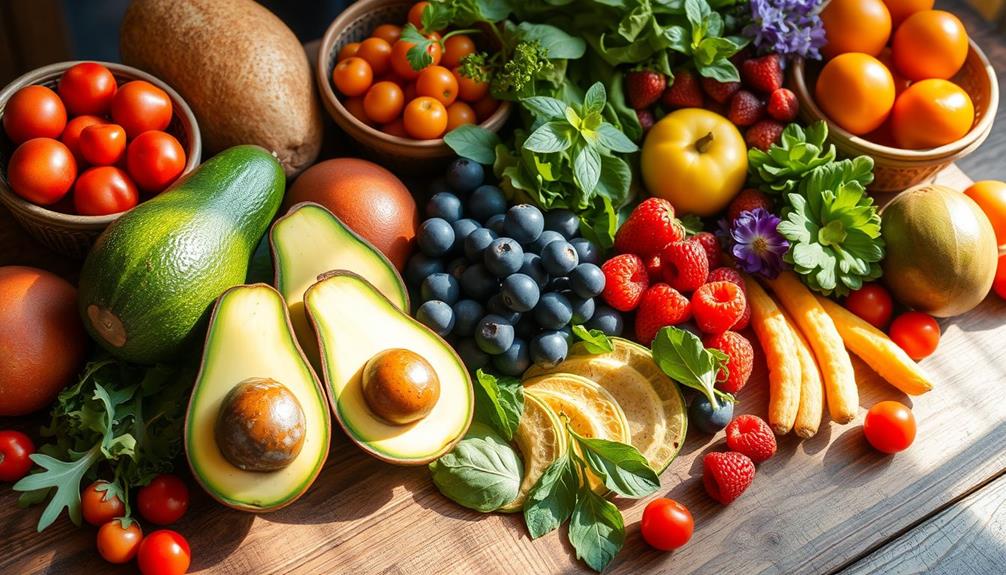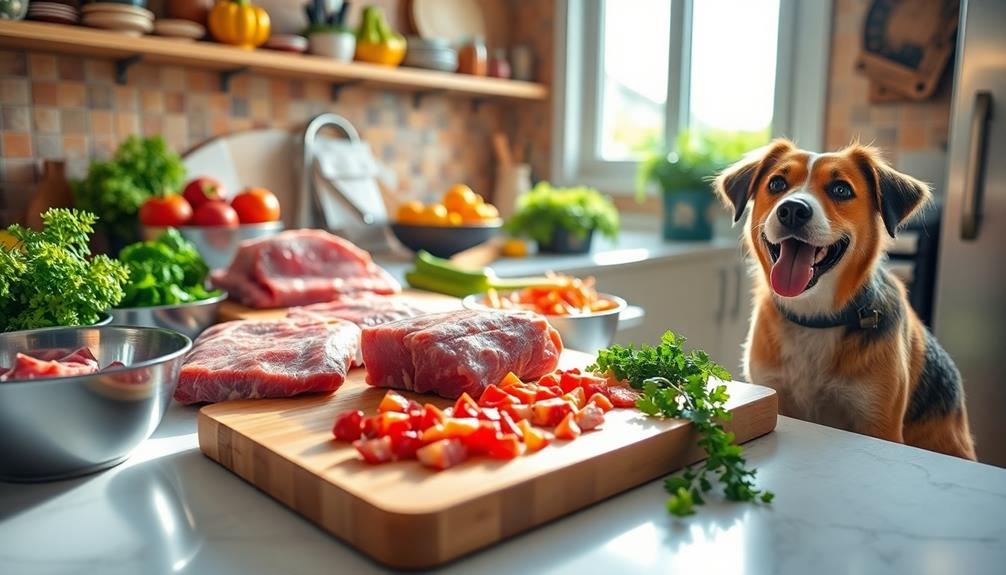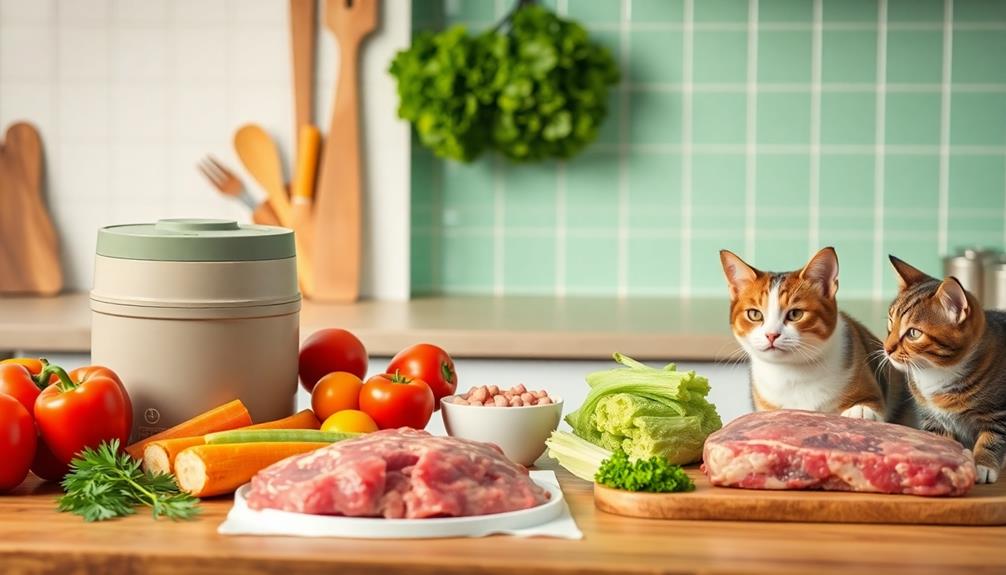When you switch your pet to a raw food diet, it's important to understand how this choice can impact blood work and overall health. Expect to see differences in key tests like hematocrit, Blood Urea Nitrogen (BUN), and creatinine levels. Raw-fed dogs often show elevated BUN and hematocrit levels, indicating higher protein intake and hydration status. Regular blood tests help monitor your pet's health and catch any potential issues early. Tailored veterinary assessments are crucial for accurate interpretation of results. Plus, they can guide you in making informed choices about your pet's nutrition and care moving forward.
Key Takeaways
- Regular blood work, including CBC and chemistry panels, is essential for monitoring the health of pets on raw food diets.
- Raw-fed dogs often exhibit higher hematocrit and BUN levels, necessitating tailored veterinary assessments for accurate health evaluation.
- Elevated creatinine levels in raw-fed dogs indicate the need for close monitoring of kidney health and function.
- Nutritional deficiencies, such as calcium and certain vitamins, are common risks associated with raw diets, which blood tests can help identify.
- Understanding the impacts of a raw food diet on blood values guides informed decisions about pet nutrition and health management.
Understanding Raw Food Diets
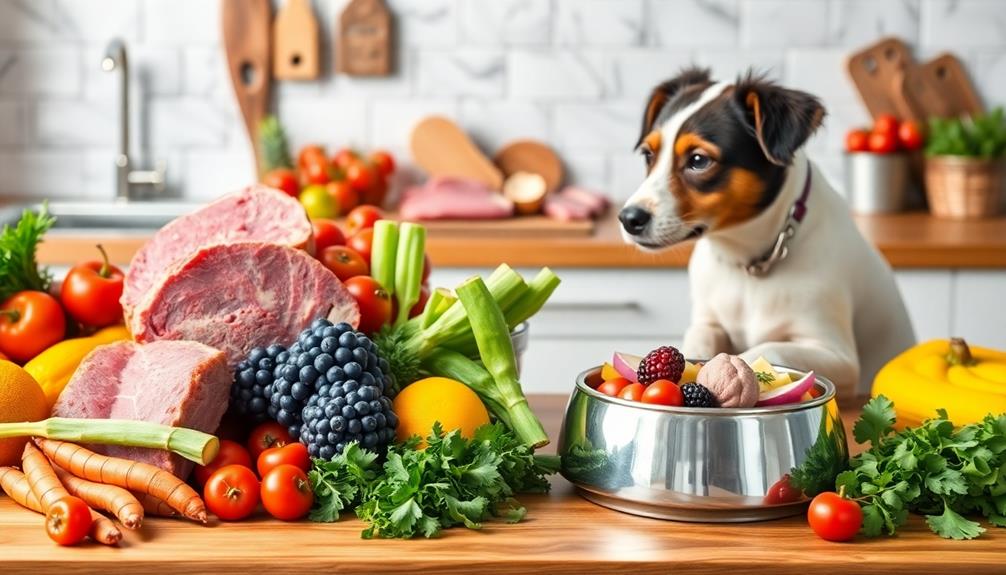
When you consider your pet's diet, understanding raw food diets is vital. Raw diets typically consist of uncooked animal products like meat, bones, and organs. While advocates of raw feeding tout benefits such as improved digestion and healthier coats, the veterinary community has raised concerns about nutritional deficiencies and safety risks.
Living in abundance through mindful feeding can also enhance your pet's overall well-being.
Nutritional deficiencies often linked to raw diets include inadequate levels of calcium, phosphorus, and certain vitamins. These deficiencies can severely impact your dog's overall health.
It's significant to recognize that studies, like the Wynn/Dodds research, show that dogs on raw diets may have higher hematocrit and blood urea nitrogen (BUN) levels compared to those fed kibble. This indicates that tailored blood reference ranges are vital for monitoring the health of raw-fed dogs.
Additionally, if your pet has specific health conditions, such as albuminuria, raw diets mightn't be suitable. These diets can be taxing on compromised digestive systems, making home-cooked meals a better option.
As a result, before committing to raw feeding, consider consulting your veterinarian to guarantee your pet's diet is balanced and meets their unique health needs.
Importance of Regular Blood Work
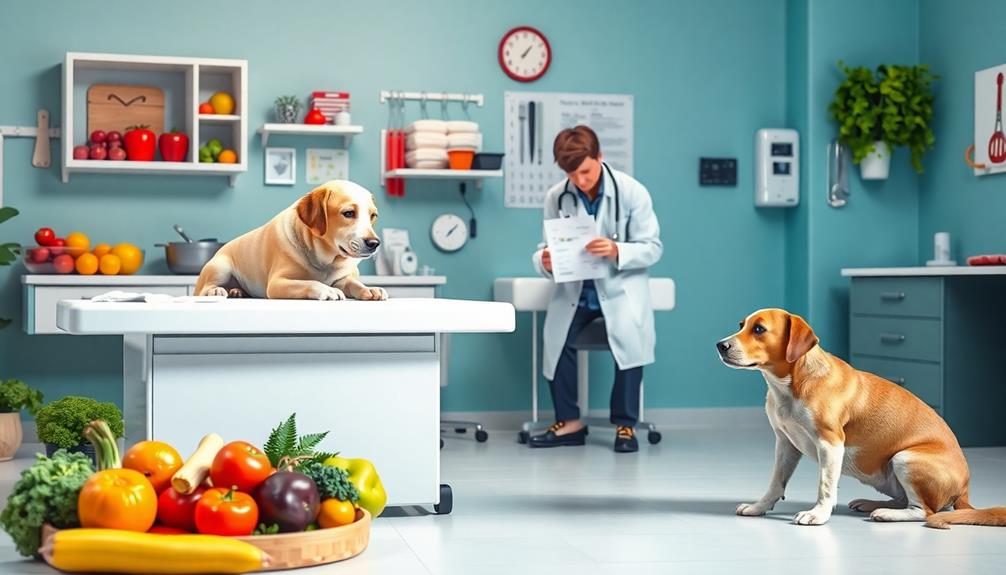
Regular blood work plays a key role in monitoring your pet's health, especially if you're considering a raw food diet.
It's important to keep a close eye on your dog's blood markers, as this helps identify potential issues early on.
Regular testing, including Complete Blood Count (CBC) and Chemistry panels, can reveal:
- Nutritional deficiencies that may arise from a raw food diet
- Indicators of kidney dysfunction, which can be linked to dietary choices
- Changes in blood values compared to kibble-fed dogs
- Overall health status, allowing for timely adjustments to your dog's diet
Key Blood Tests for Pets
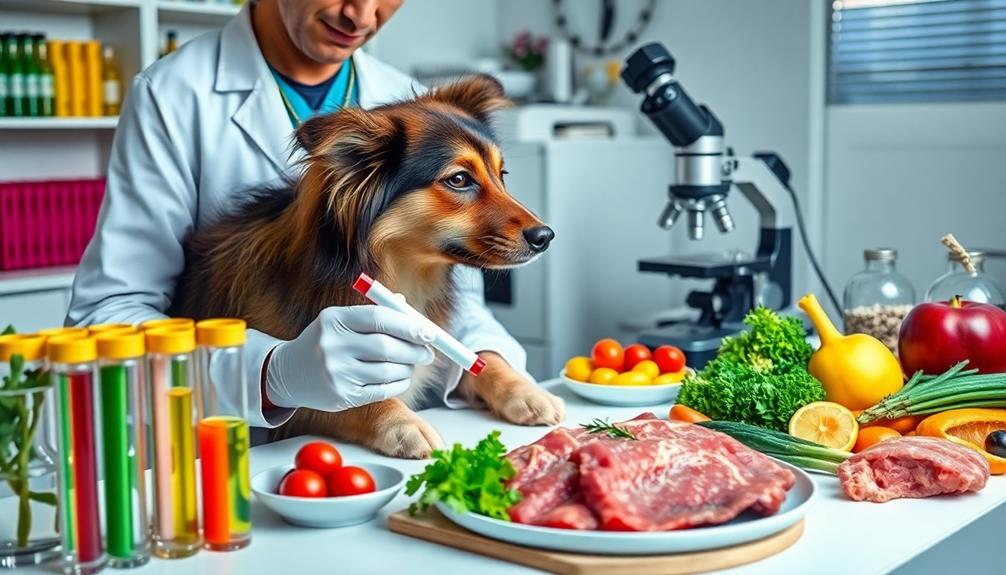
When it comes to your pet's health, understanding key blood tests like the Complete Blood Count (CBC) and Chemistry panel is essential.
These tests help you interpret important information about red and white blood cells, as well as organ health. Knowing how diet influences these results can guide you in making informed decisions about your pet's nutritional needs.
Essential Blood Tests
Essential blood tests for pets play a significant role in evaluating their overall health and identifying potential issues early on.
These tests provide critical information about your pet's organ functions and blood cell counts, helping you make informed decisions about their care.
Key tests include:
- Complete Blood Count (CBC): Analyzes red and white blood cells and platelets, offering insight into your pet's immune health.
- Hematocrit Levels: Measures the percentage of red blood cells in the blood, which can indicate anemia or dehydration. Raw-fed dogs often show higher hematocrit levels compared to kibble-fed dogs.
- Blood Urea Nitrogen (BUN): Reflects protein intake and kidney function, with raw-fed dogs typically having elevated BUN levels due to higher protein consumption.
- Creatinine Levels: Indicates kidney health and muscle mass, necessitating regular monitoring as raw-fed dogs may present different levels than kibble-fed dogs.
Interpreting Blood Test Results
Interpreting blood test results is essential for understanding your pet's health, especially if they're on a raw food diet. Regular blood work helps you keep an eye on important metrics like BUN levels, creatinine, and hematocrit, which are critical for evaluating your pet's overall health and specific nutritional needs.
For instance, higher BUN levels in raw-fed dogs indicate increased protein metabolism, which can be normal but requires monitoring.
Likewise, different creatinine levels offer insight into renal function; it's crucial to watch for any changes that could signal kidney issues.
Hematocrit levels, which reflect red blood cell concentration, may also differ between raw-fed and kibble-fed pets, impacting your pet's energy and oxygen-carrying capacity.
Blood Value Differences Explained
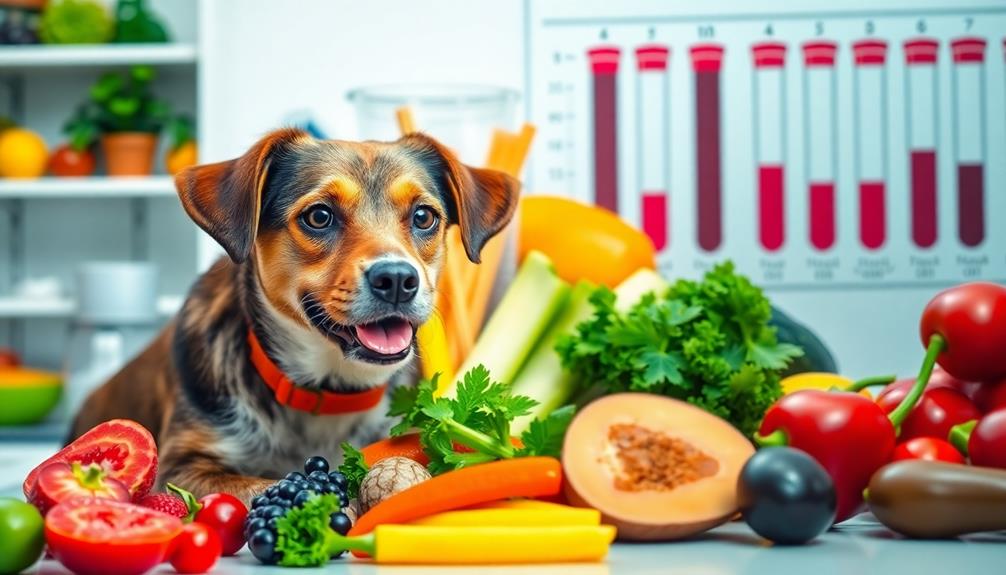
Understanding the differences in blood values between raw-fed and kibble-fed dogs is essential for accurate veterinary assessments. When your dog is on a raw diet, their blood values can reflect variations in nutritional status and health indicators compared to those fed kibble.
Here are some key differences you should know:
- Hematocrit levels: Raw-fed dogs typically have higher levels (51.0 ± 6.6%) than kibble-fed dogs (47.6 ± 6.1%), which may indicate hydration status.
- BUN levels: Elevated Blood Urea Nitrogen (BUN) levels (18.8 ± 6.9 mg/dL) in raw-fed dogs reflect higher protein consumption compared to kibble-fed dogs (15.5 ± 4.7 mg/dL).
- Creatinine levels: Raw-fed dogs also show higher creatinine levels (1.20 ± 0.34 mg/dL), suggesting differences in muscle mass and kidney function versus kibble-fed dogs (1.07 ± 0.28 mg/dL).
- Nutritional status: These variations highlight the necessity for veterinarians to understand and interpret blood values accurately for healthy dogs on raw diets.
Recognizing these differences can help prevent misdiagnosis and guarantee your dog's health is assessed correctly.
Insights From the Wynn/Dodds Study
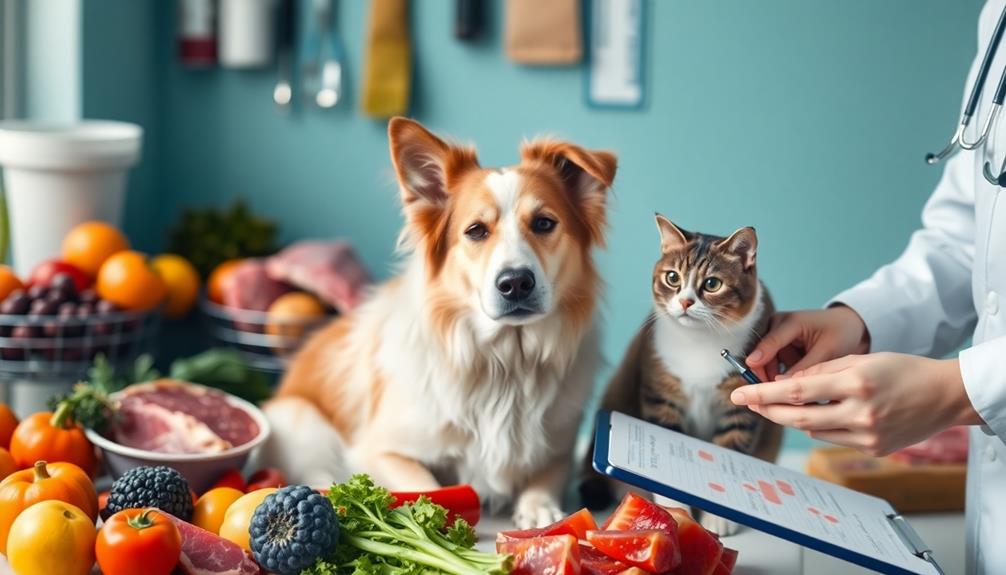
The Wynn/Dodds study offers valuable insights into the effects of raw diets on blood work in dogs.
With a sample of 87 raw-fed and 75 kibble-fed dogs, the study highlights significant differences in hematocrit and BUN levels, which can influence your pet's health assessments.
Understanding these findings can help you make informed decisions about your dog's nutrition and monitor their kidney function effectively.
Study Overview and Methodology
In a thorough study involving 162 dogs, researchers conducted a two-part analysis to evaluate the effects of raw versus kibble diets on canine health. The study's methodology focused on comparing 87 raw-fed dogs with 75 kibble-fed dogs over a nine-month period. The benefits of a raw food diet for dogs may include improved coat condition and increased energy levels, which are aspects worth considering for pet owners potential benefits of raw food.
Key aspects of the study included:
- Examining hematocrit levels, which were higher in raw-fed dogs (51.0 ± 6.6%) than in kibble-fed dogs (47.6 ± 6.1%).
- Analyzing Blood Urea Nitrogen (BUN) levels, revealing notably higher values in raw-fed dogs (18.8 ± 6.9 mg/dL) compared to kibble-fed dogs (15.5 ± 4.7 mg/dL), indicating increased protein consumption.
- Conducting urinary protein tests on 37 healthy adult raw-fed dogs, with 32 testing negative for microalbuminuria, suggesting minimal protein leakage.
- Noting the need for revised blood reference ranges specific to raw-fed dogs, as the findings demonstrated notable differences in blood work metrics.
This extensive study sheds light on the unique health markers related to raw-fed and kibble-fed dogs, paving the way for more tailored veterinary care and dietary recommendations.
Key Findings and Implications
Insights from the Wynn/Dodds study reveal considerable differences in health markers between raw-fed and kibble-fed dogs, emphasizing the necessity for tailored veterinary evaluations. The study examined 87 raw-fed dogs and 75 kibble-fed control dogs, finding that raw-fed dogs had higher hematocrit levels and BUN levels. This indicates that dietary differences considerably affect blood work results.
| Health Marker | Raw-Fed Dogs | Kibble-Fed Dogs |
|---|---|---|
| Hematocrit Levels | 51.0 ± 6.6% | 47.6 ± 6.1% |
| BUN Levels | 18.8 ± 6.9 mg/dL | 15.5 ± 4.7 mg/dL |
| Microalbuminuria | 5/37 positive | 0/37 positive |
| Hydration Impact | Higher protein intake | Lower hydration levels |
| Need for Assessments | Revised blood ranges | Standard reference ranges |
The findings show that while a small number of healthy dogs on raw diets tested positive for microalbuminuria, most did not, suggesting these diets don't typically cause protein leakage. This emphasizes the importance of understanding hematocrit and BUN levels for evaluating hydration and protein intake. Tailored veterinary evaluations are essential to prevent misinterpretation of blood results in raw-fed dogs.
Hematocrit Levels in Raw Diets
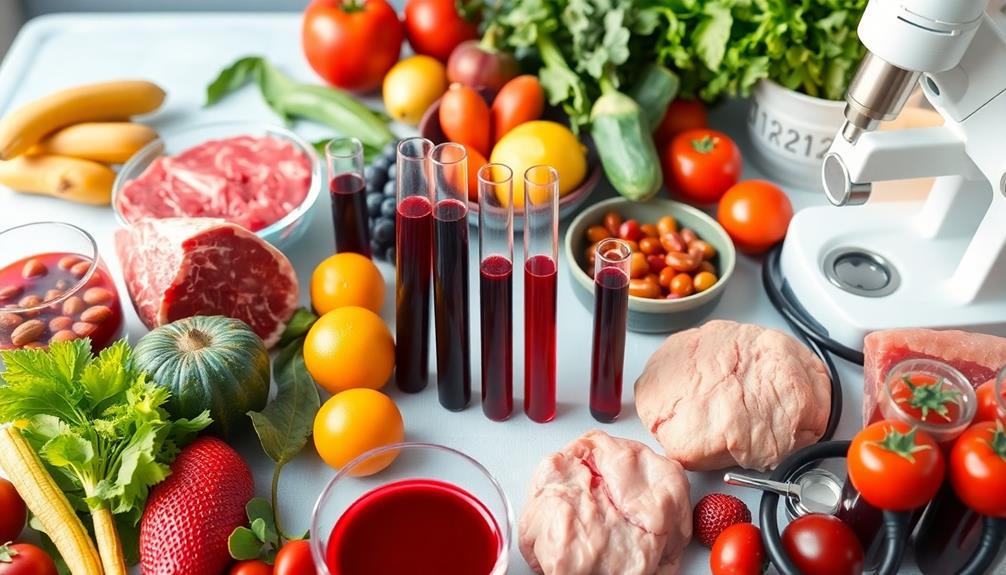
Raw-fed dogs often show higher hematocrit levels compared to their kibble-fed counterparts, averaging 51.0 ± 6.6% versus 47.6 ± 6.1%. These hematocrit levels reflect the percentage of red blood cells in a dog's blood and can provide insights into their overall health. Higher levels in raw-fed dogs may indicate better hydration and nutritional status, particularly due to the consumption of iron-rich proteins.
When evaluating blood work, consider the following:
- Hematocrit levels can signal hydration status; elevated levels might suggest dehydration.
- Regular monitoring is essential, as lower levels could indicate anemia.
- Veterinarians must understand diet differences to interpret results accurately.
- The Wynn/Dodds study underscores the need for revised reference ranges specific to raw-fed dogs.
Understanding these hematocrit values is vital for your veterinarian to avoid misdiagnosis and provide appropriate care.
Analyzing Blood Urea Nitrogen Levels
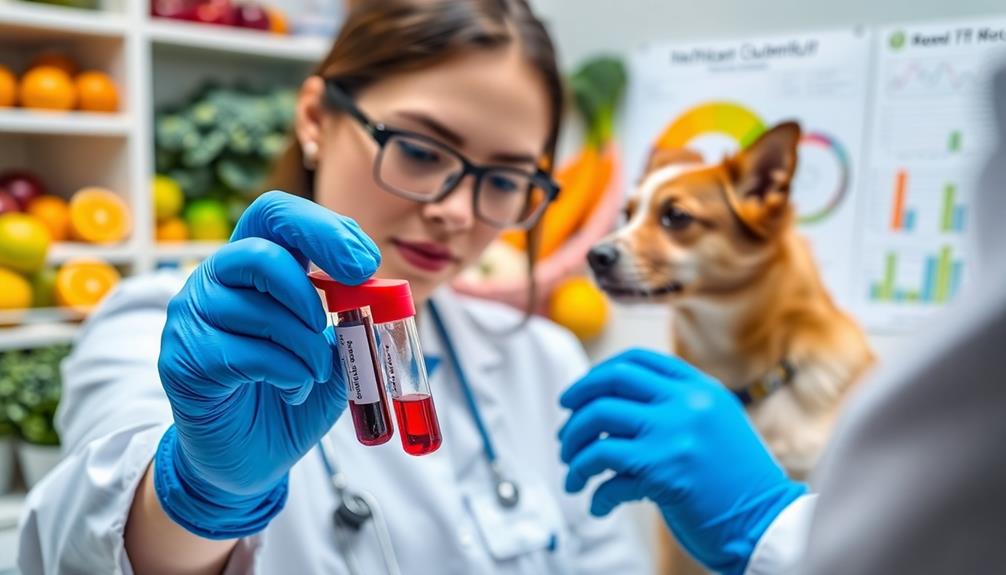
When evaluating your dog's health, analyzing Blood Urea Nitrogen (BUN) levels provides valuable information about their protein intake and kidney function. BUN is a waste product formed from protein breakdown in the liver, and its levels can reveal how well your dog is processing dietary protein.
Raw-fed dogs typically exhibit higher BUN levels—averaging around 18.8 mg/dL—due to their increased protein consumption compared to kibble-fed dogs, which average about 15.5 mg/dL.
Elevated BUN levels could indicate potential kidney damage or low fluid intake, making monitoring essential for reviewing overall health. If your dog's BUN levels are high, it's important to investigate any underlying issues, as they may signal health concerns.
Conversely, low BUN levels might suggest inadequate protein intake or liver problems.
Regular blood work, including BUN testing, helps you detect nutritional imbalances early on. By understanding your dog's BUN levels, you can guarantee their diet is appropriate and that their kidney function remains ideal.
Stay proactive with your dog's health by discussing these results with your veterinarian and making necessary dietary adjustments.
Creatinine and Kidney Health
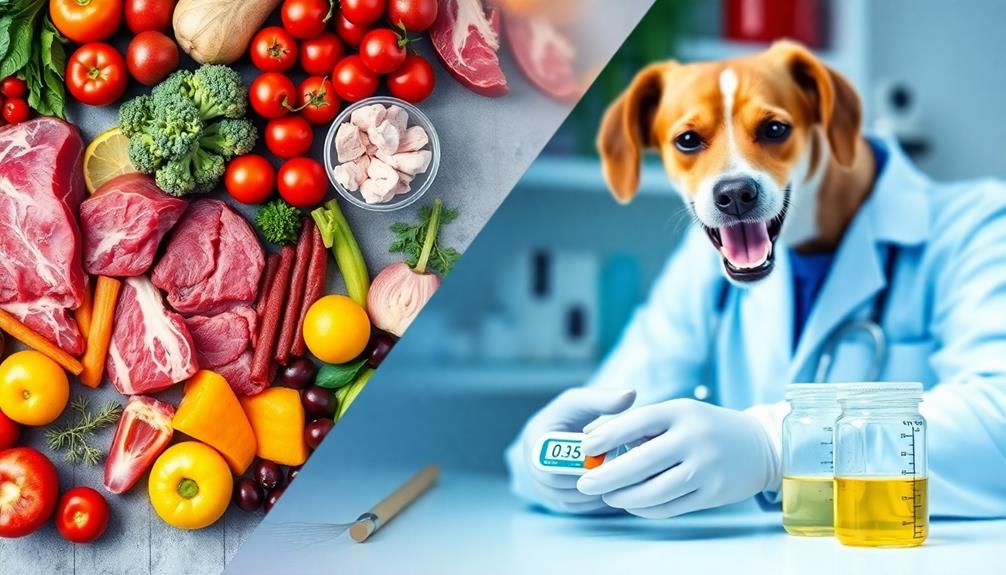
Monitoring creatinine levels is essential for evaluating your dog's kidney health, as these levels reflect how effectively the kidneys filter waste. Elevated creatinine levels can indicate compromised kidney function, so regular blood work is imperative, particularly for aging or at-risk dogs.
Understanding the relationship between diet and kidney function is important, especially when comparing raw-fed dogs to kibble-fed dogs.
Keep an eye on:
- Creatinine levels to track waste filtration efficiency
- Dietary recommendations tailored to your dog's specific needs
- Underlying health issues that may affect renal health
- Routine blood work to monitor changes over time
Veterinary Perspectives on Raw Feeding
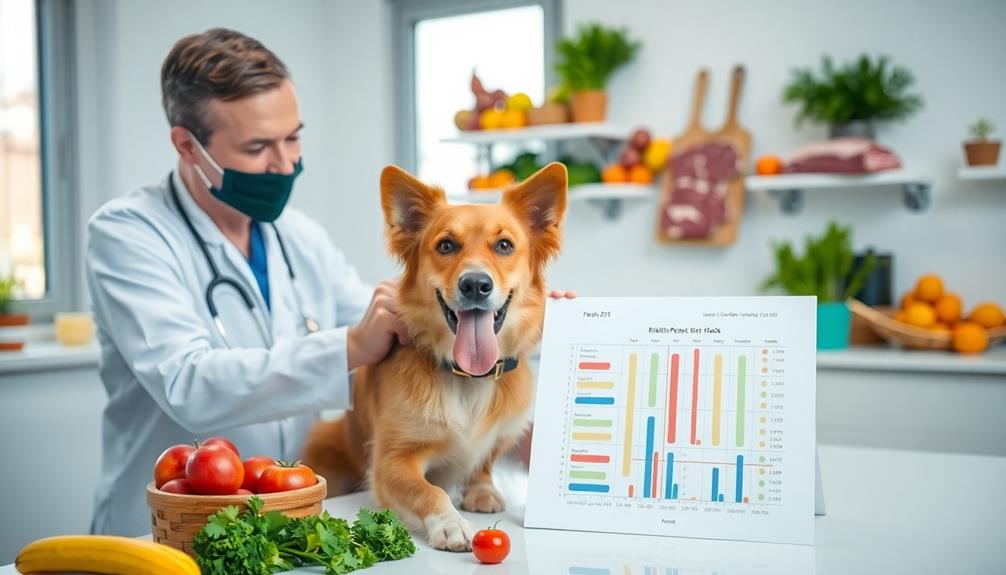
Veterinarians often have mixed feelings about raw feeding, largely stemming from a lack of familiarity with its potential benefits and risks. Many veterinarians express skepticism due to misconceptions regarding raw diets and their nutritional impacts. This skepticism can lead to misinterpretation of blood work results, particularly since raw-fed dogs often show different health markers compared to kibble-fed dogs.
For instance, studies, like the Wynn/Dodds study, indicate that raw-fed dogs may have higher hematocrit and BUN levels, which can confuse health assessments. Additionally, raw diets often include high-quality protein sources that can support overall health, which may be overlooked in traditional assessments best dog food for allergies.
Regular blood work is essential for all dogs, but raw-fed dogs may need tailored reference ranges to accurately evaluate their health. Without current knowledge about raw feeding, veterinarians may unnecessarily alarm pet owners about blood test results, potentially causing unwarranted stress.
Education on the specific needs and health impacts of raw diets is vital for veterinary professionals. By enhancing their understanding, veterinarians can foster informed decision-making and provide proper health assessments for raw-fed dogs, ensuring pet owners feel confident in their nutrition choices.
Frequently Asked Questions
How Long Does It Take to See Results From a Raw Diet for Dogs?
You'll typically notice improvements in your dog's coat, energy, and vigor within 4 to 6 weeks on a raw diet. However, expect significant blood work changes to take several months to manifest fully. Patience is key.
Should Dogs Not Eat Before Blood Work?
Yes, dogs shouldn't eat before blood work. Fasting for 8-12 hours guarantees accurate results, especially for tests like glucose and triglycerides. Always check with your vet for specific fasting guidelines tailored to your dog's health.
Can Raw Dog Food Cause Blood in the Stool?
Did you know nearly 30% of dogs on raw diets experience gastrointestinal issues? Yes, raw dog food can cause blood in the stool, often due to harmful bacteria or imbalanced nutrition. Monitor your dog closely!
What Is a Full Panel Blood Test for a Dog?
A full panel blood test for your dog includes a Complete Blood Count and a Chemistry panel. It checks overall health, organ function, and metabolic status, helping you and your vet monitor potential health issues effectively.
Conclusion
In the vibrant tapestry of pet health, a raw food diet can weave both benefits and challenges. Regular blood work acts as a compass, guiding you through this journey, ensuring your furry friend thrives. By understanding key blood values, you'll uncover the nuances of their well-being. So, as you navigate this culinary adventure, keep those vet visits on your radar; together, you'll cultivate a flourishing, healthy life for your beloved companion.

